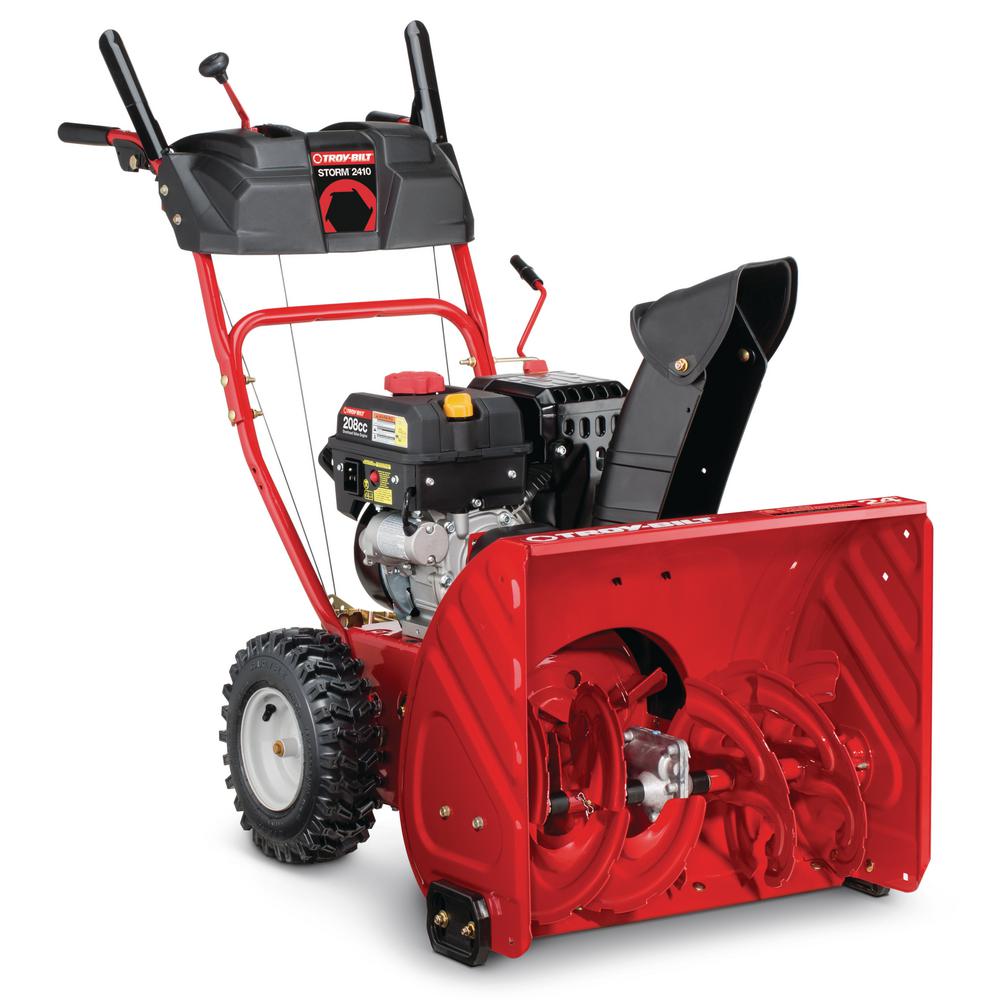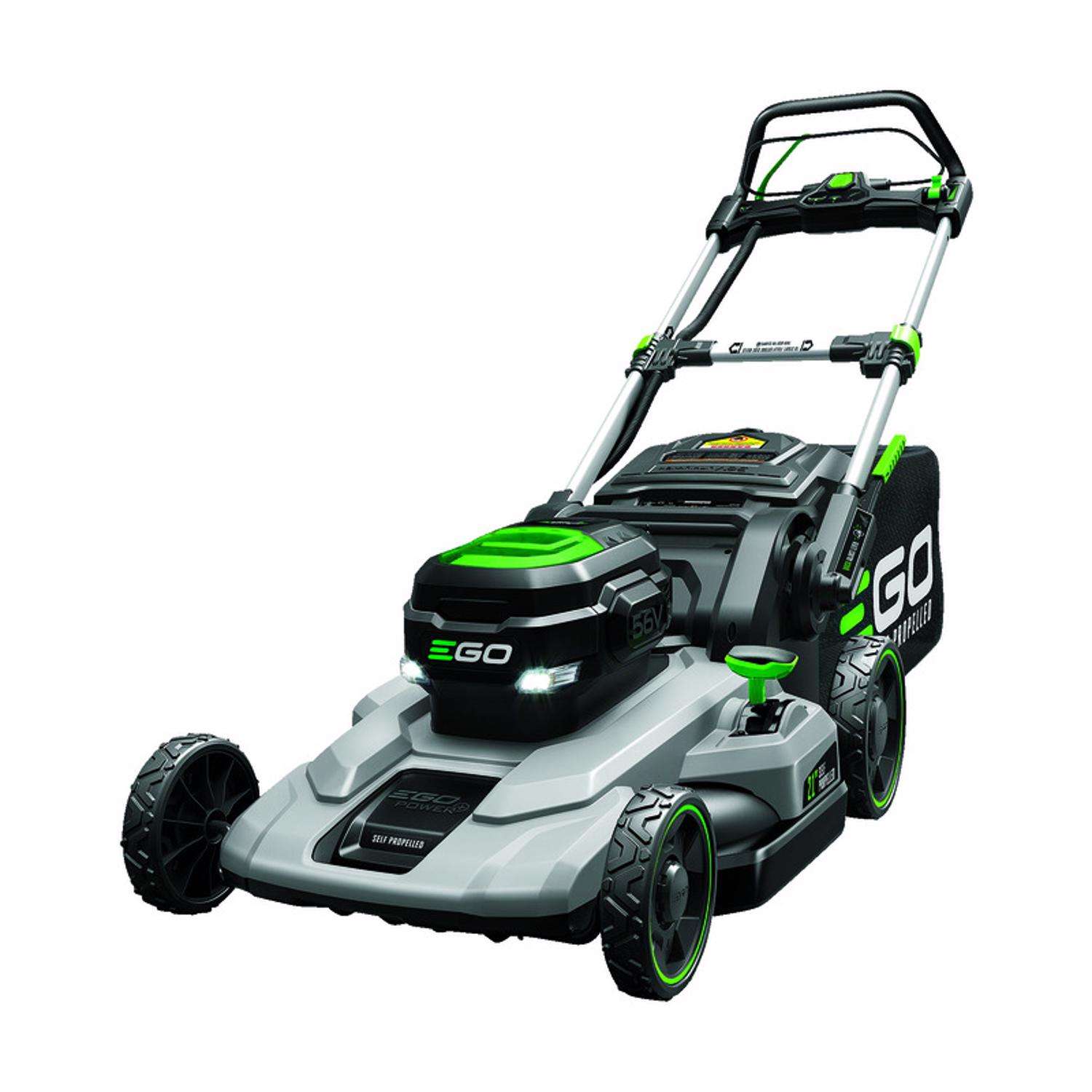Troy-Bilt 24 in. 208 cc Two-Stage Gas Snow Blower with Electric Start Self Propelled
208cc Troy-Bilt electric start engine with 24 in. clearing width. Remote crank chute control provides 180° chute control rotation. Self-propelled drive, allows for control and versatility.
When the forecast calls for up to a foot of snow, The Troy-Bilt STORM 2410 2-Stage Electric Start Snow Blower with 13 in. x 4 in. X-Trac tires and 24 in. clearing path will cut into large drifts with its 21 in. intake height and serrated steel augers. Self-propelled all-wheel drive with choice of 6 forward and 2 reverse speeds, giving you control and versatility in winter conditions. Plus, the remote chute control allows you to adjust the chute direction from the operator area. Powered by a reliable 208cc Troy-Bilt OHV 4-cycle engine with pushbutton electric start. Top Rated by a Leading Publication.
- 24 in. clearing width with 12 in. serrated steel augers helps break up ice and snow for easier removal
- Troy-Bilt certified 208 cc OHV engine
- Push-button electric start eliminates pull-starting a cold engine
- Crank chute control with 180° rotation allows you to adjust the direction of snow discharge, so its thrown where you want it
- Self-propelled drive with choice of 6 forward and 2 reverse speeds
- 13 in. x 4 in. X-trac tires offer traction and easier steering over snowy areas
- High impact, adjustable polymer skid shoes help protect surfaces from scuffing
- Reinforced steel housing provides durability and ruggedness for years of use
- 2-year limited warranty
- Snow cab offers additional safety against harsh weather and the snow thrower cover protects your equipment when not in use (each sold separately)
Additional information
| Assembled Depth x Height x Width (in.) | 49 x 33 x 25 |
|---|---|
| Auger Diameter (in.) | 12 |
| Clearing Width (In.) | 24 |
| Ideal Snow Depth (In.) | 12 |
| Impeller Diameter (in.) | 12 |
| Intake Height (in.) | 21 |
| Tire Height (in.) | 13 |
| Tire Width (in.) | 4 |
| Certifications and Listings | No Certifications or Listings |
| Manufacturer Warranty | 2-Year Limited Warranty |






by Eddie
Fast delivery. Easy assembly ( But a handle bar bolt and nut were missing). A splash of gas and fired right up. Like the hand choke function. Good buy.
by Brooks
Best snow blower I have ever owned. Waiting for snow to try it out.
by Jimmy
Some years we don’t use it at all, and some years we use it 5-6 times in heavy snow. Even with 12 inches of wet snows, it throws the snow a good distance and height, which is important with the frequent snow storms this year. Starts up with one pull every year (my teenager insists that the electric start is only for old men like me). Other than a bit of rust on the blades from the road salt, the machine looks and runs like new.
by Chris
Moved back to Southern Indiana a few years, haven’t had to move the snow like I thought I would have. 2/2021: Put the blower to the test, and it worked like a champ. Moved 7″ of snow without an issue. The only thing I don’t care for is the plastic discharge chute, just wish it was metal. When you hit ice, it takes a beating, surprised it hasn’t broken, but has worked so far.
by John
Great delivery, minimal setup and works great! Used 2x so far significant snowfall, and worked really well. Engine starts right up using electric start, and pretty powerful. No regrets.
by Stinks
Works great! First use was on heavy, wet snow and it cut through it great.